

Start Monetizing as a Content Creator
Join Hule, the social platform that empowers content creators
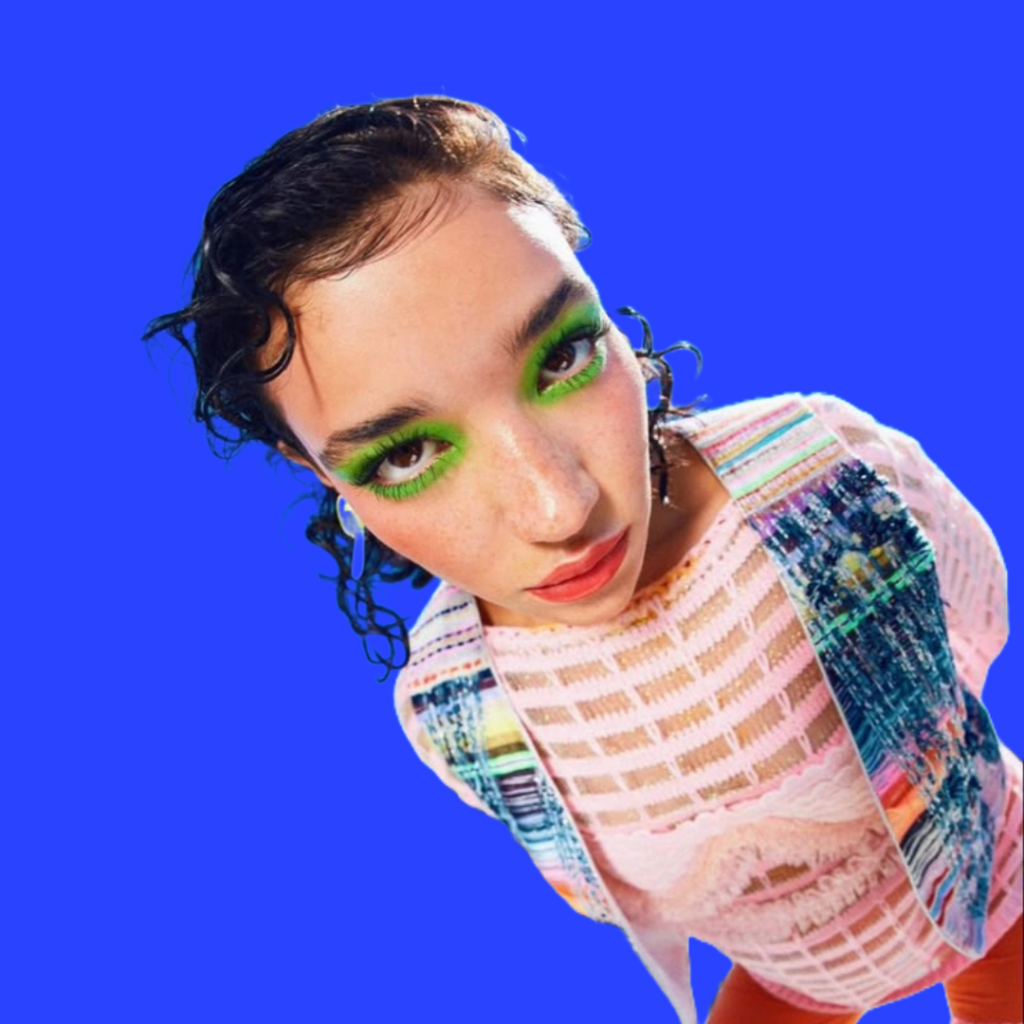
10 Monetization Platforms for Content Creators in 2025
By Leo | Posted on March, 20, 2025 | 10 mins Read
As the creator economy expands, monetization platforms transform how creators generate and scale their income. In 2025, advancements in AI and automation are unlocking new opportunities, from content production to marketing optimization. Whether you’re an independent artist, writer, or influencer, choosing the right platform can make all the difference in building a sustainable career. This article explores the top monetization platforms that can help you maximize your earnings and creative potential in the evolving digital landscape. Keep reading to discover the best opportunities for creators in 2025.

An Insight into The Creator Economy
The creator economy is projected to continue its rapid growth in 2025, with the global market expected to reach $191.55 billion. This market could grow to $528.39 billion by 2030, reflecting an annual growth rate of 22.5%. This significant expansion highlights a shift in the creator economy, as digital platforms and marketing become essential tools for brand promotion. Key regions such as North America, Asia-Pacific, and Europe are leading the market, with North America accounting for approximately 40% of global revenue.
A major driver of this growth is the rise of Artificial Intelligence (AI). Tools like Adobe Sensei and RunwayML enhance content creation and editing processes, providing unlimited creative potential. AI streamlines production and opens up new possibilities, such as virtual influencers like Lil Miquela, an AI avatar with millions of followers who have collaborated with major brands like Prada and Calvin Klein. AI allows creators to improve efficiency and develop data-driven content strategies in real time, leading to personalized and interactive content.
The creator economy is also transitioning from a casual, hobbyist model to a more professionalized one. Brands and marketers are increasingly focused on the return on investment (ROI) from influencer marketing campaigns, necessitating higher levels of transparency and more strategic collaboration. This change emphasizes the need for advanced analytics tools to optimize the effectiveness of influencer partnerships.
Furthermore, collaborations between creators and traditional platforms such as Netflix, Amazon, and Peacock are becoming more common. These platforms are partnering with top YouTubers to produce new content and shows aimed at attracting younger audiences and diversifying their entertainment offerings.
Government investment and support for the creator economy are also increasing. For instance, India has announced a $1 billion fund to help foster the growth of the creator economy, enabling creators to develop their skills and expand into global markets. This initiative is expected to provide significant opportunities for creators and boost the creative economy in developing countries.
These trends not only give creators the chance to build personal brands and optimize their workflows but also drive innovation in marketing and advertising strategies. The creator economy is rapidly evolving and is poised to have a considerable impact on how the marketing and advertising industries operate in the coming years.
Rise of Fan-Driven Monetization Platforms
Fan-driven monetization platforms are rapidly becoming a primary source of income for creators, providing an alternative to ad-based revenue. Platforms such as Patreon, OnlyFans, and Substack allow creators to build dedicated fan bases and earn income directly from their followers, ensuring financial stability in an ever-changing digital landscape.
Patreon, for instance, is one of the leading platforms that enables creators to earn consistent, recurring revenue. In 2023, Patreon reported over 250,000 creators earning income through subscriptions, and since its launch, creators on the platform have collectively earned more than $2 billion. With over 6 million patrons, creators can offer exclusive content, behind-the-scenes access, and personal interactions, which helps foster strong relationships with their audience.
OnlyFans, initially associated primarily with adult content, has recently seen a significant increase in creators from various fields, including fitness, music, and cooking. According to The New York Times, OnlyFans’ revenue has skyrocketed in recent years, with creators earning more than $5 billion in 2021 alone. The platform has become a preferred choice for many content creators looking to monetize their work in a flexible and direct manner. The pandemic significantly influenced this shift, as many creators turned to platforms like OnlyFans to replace lost income from traditional gigs and events.
On the other hand, Substack empowers writers to monetize their newsletters, providing an alternative to ad-driven income. As of 2023, Substack had over 1 million paid subscribers, and creators have collectively earned over $20 million in subscription fees. This model has ushered in a new era of independent journalism, allowing writers to achieve financial independence from traditional publishing outlets. Notable writers such as Casey Newton and Heather Cox Richardson have successfully leveraged Substack to reach dedicated audiences while bypassing traditional media gatekeepers.
These fan-driven platforms illustrate a growing trend where creators can directly monetize their content without relying on intermediaries or ad revenue. As a result, platforms like Patreon, OnlyFans, and Substack have become central to the creator economy, offering creators greater autonomy and revenue stability.
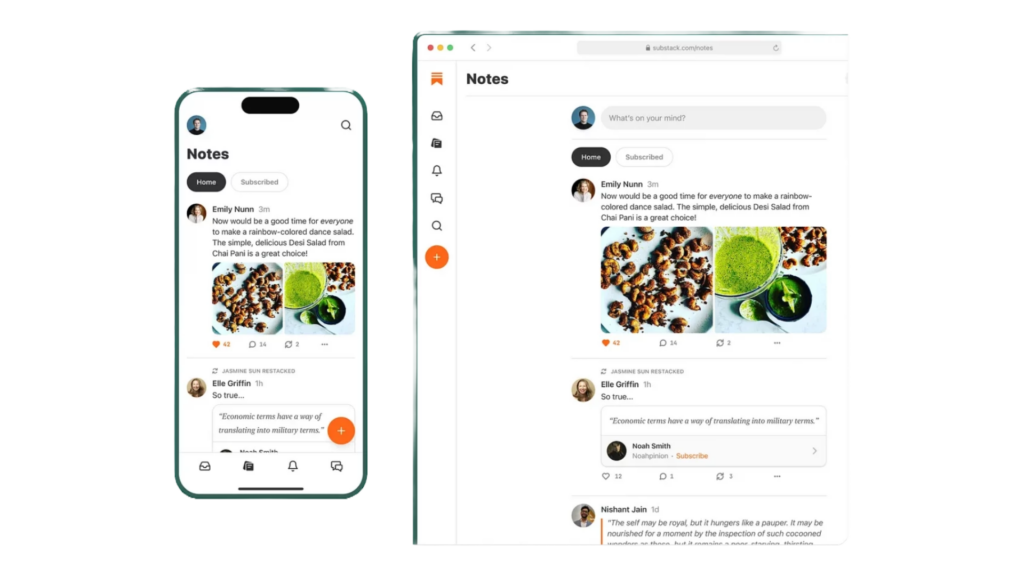
Top 10 Creators' Monetization Platforms in 2025
As the creator economy continues to mature, 2025 will see content creators relying on a diverse range of platforms to monetize their work. However, not all platforms offer the same benefits or face the same challenges. To help creators navigate the expanding opportunities, it’s essential to understand the strengths and weaknesses of the top platforms, including how they align with evolving trends like AI and automation. Let’s break down the top contenders in the creator monetization space and compare them.
1. YouTube: The Established Giant
YouTube remains one of the most popular and powerful monetization platforms for content creators. With over 2 billion logged-in monthly users, YouTube offers several revenue streams, such as ad revenue, Super Chats, channel memberships, and brand partnerships. The platform has a long-established audience base, which makes it a go-to option for creators looking to grow their fanbase and secure consistent income.
Strengths:
- Diverse Monetization Tools: From ad revenue to Super Chats and merchandise shelves, YouTube provides a variety of ways for creators to earn money.
- Massive Audience: With its global reach and consistent traffic, YouTube offers creators access to an immense pool of potential subscribers and viewers.
- Advanced Analytics: Creators benefit from YouTube’s detailed performance metrics to optimize content and engagement strategies.
Weaknesses:
- High Competition: Due to the platform’s popularity, new creators may struggle to stand out amid the vast number of existing channels and videos.
- Ad Revenue Dependency: Monetization through ads can fluctuate, and many creators face issues with demonetization, which limits revenue from standard ads.
- Algorithm Dependence: YouTube’s algorithm determines the visibility of content, and creators have little control over how their videos are recommended.
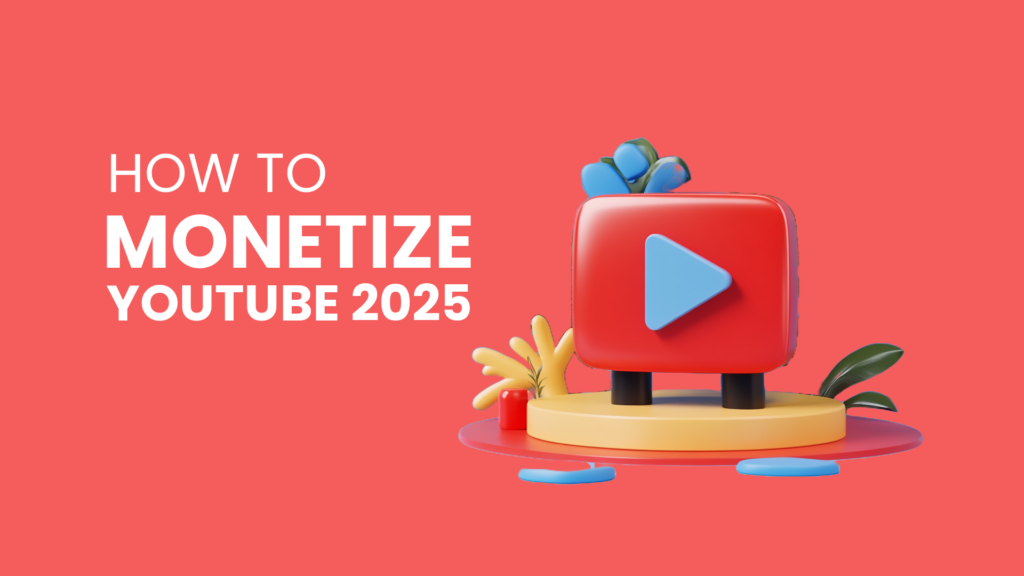
2. Patreon: Fan-Driven and Community-Based Monetization
Patreon has emerged as a leading monetization platform for creators looking to build a sustainable income through direct support from their fans. It enables creators to offer exclusive content, early access, and other perks in exchange for subscriptions. By fostering a close relationship between creators and their communities, Patreon allows for consistent and reliable income.
Strengths:
- Direct Fan Support: Patreon allows creators to establish a stable revenue stream by receiving payments directly from their fans, without relying on ads.
- Flexible Membership Tiers: Creators can offer different membership levels, each providing varying levels of content or exclusive access.
- Community Engagement: Patreon helps foster a sense of community between creators and their audience, increasing loyalty and long-term support.
Weaknesses:
- Subscriber-Dependent: While Patreon offers steady income, creators must constantly engage their subscribers to avoid churn. If the community feels the content isn’t worth the cost, they may unsubscribe.
- Platform Fees: Patreon charges a service fee that can reduce creators’ overall earnings, and its tiered structure may not suit every type of creator.
- Audience Growth: While it’s fantastic for maintaining a dedicated fanbase, it can be difficult for creators to attract new fans without external promotion or social media presence.
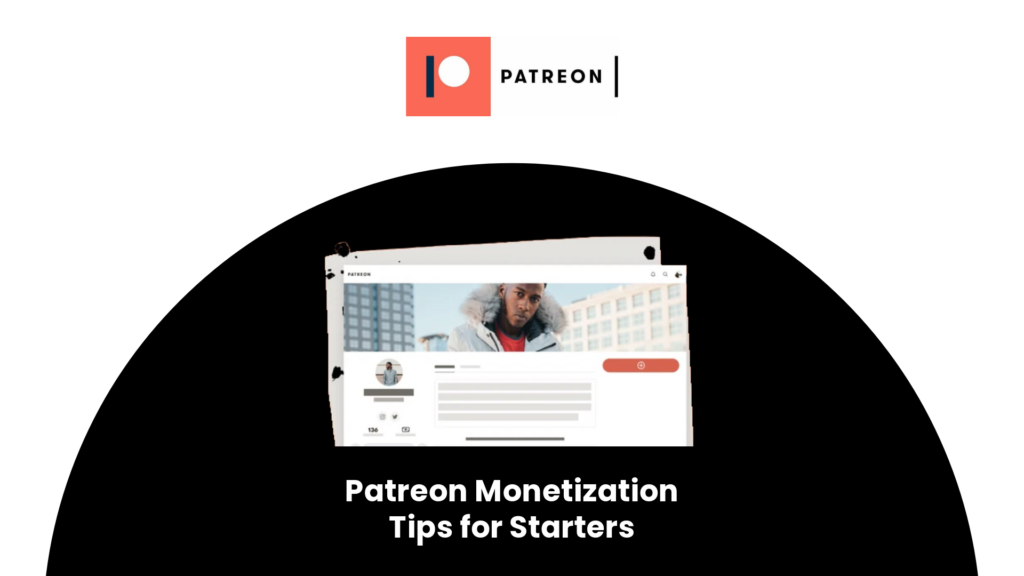
3. Hule: A New Contender in the Creator Economy
Hule is an emerging player in the creator economy, offering a platform designed to help creators optimize their monetization efforts through AI-driven tools and a focus on performance-based earnings. This platform enables creators to manage multiple revenue streams, including advertisements, sponsorships, merchandise sales, and fan donations, all while seamlessly integrating monetization into their content creation process.
Strengths:
- AI Integration: Hule’s platform utilizes advanced AI tools to assist creators in improving their content, predicting trends, and optimizing audience targeting, which can lead to increased earnings.
- Comprehensive Monetization Features: By combining traditional ad revenue with modern avenues like live streaming sponsorships and virtual gifting, Hule provides creators with a one-stop shop for monetization.
- User-Friendly Interface: Hule is noted for its simplicity and ease of use, allowing creators—especially those new to monetization—to quickly get started without facing a steep learning curve.
Weaknesses:
- Limited Brand Recognition: As a newer platform, Hule lacks the established user base that platforms like YouTube and Patreon have. This can make it more challenging for creators to find a large and engaged audience.
- Uncertain Long-Term Viability: As a newcomer in the market, Hule’s longevity and sustainability are still uncertain, causing some creators to hesitate before investing significant time or resources into the platform until it proves itself.
- Market Penetration: While promising, Hule has not yet expanded its reach as widely as YouTube, thus limiting the potential audience size for creators, particularly those aiming for a global presence.

4. TikTok: Short-Form Video Dominance and Brand Partnerships
TikTok continues to dominate the short-form video market, offering creators the opportunity to go viral and build a global fanbase almost overnight. Its algorithm prioritizes engagement over follower count, which has been instrumental in helping even new creators find success quickly.
Strengths:
- Viral Potential: TikTok’s algorithm can make content go viral, providing exposure to millions of viewers in a short amount of time.
- Brand Partnerships: As a result of its massive audience, TikTok is a valuable tool for influencer marketing, with brands eager to collaborate with creators to reach younger, more engaged demographics.
- Creator Fund and Live Gifts: TikTok’s Creator Fund and live streaming features provide creators with opportunities to earn money directly from the platform.
Weaknesses:
- Ad Revenue Volatility: TikTok’s creator fund payouts are inconsistent, and the platform does not offer as many monetization features as YouTube or Patreon.
- Short-Form Content Limits: The nature of TikTok’s content requires frequent, high-engagement posts, which can be demanding for creators aiming for sustained success.
- Platform Dependence: Just like YouTube, creators rely on TikTok’s algorithm, which may make or break their success on the platform, depending on how the algorithm decides to promote their content.

5. Substack: Monetizing Newsletters and Niche Content
Substack has rapidly grown as a top monetization platform for creators focused on delivering written content, particularly for those interested in building subscriber-based newsletters. By allowing creators to offer both free and premium subscription models, Substack empowers writers, journalists, and thought leaders to generate income from their audience directly.
Strengths:
- Direct Relationship with Subscribers: Substack gives creators the ability to build an audience of dedicated subscribers, providing more control over their income.
- Premium Subscription Model: Creators can charge for premium content, which can help ensure a steady stream of income from loyal followers.
- Simplicity: The platform’s clean interface allows creators to focus on content without needing to worry about complex website management.
Weaknesses:
- Niche Audience: Substack works best for creators who have a niche or established audience. New or lesser-known creators may struggle to grow their subscriber base.
- Limited Content Types: Unlike other platforms, Substack is focused primarily on written content, which limits creators who produce more varied types of media, such as video or audio.
- Revenue Sharing: Substack takes a 10% cut of earnings, which can add up as creators grow their audience.

6. OnlyFans: Subscription-Based Adult Content Platform
OnlyFans has become one of the most famous platforms for creators, particularly in the adult entertainment industry, offering creators the ability to charge subscribers for access to exclusive content. However, the platform has expanded into mainstream niches, with creators in beauty, fitness, and cooking also finding success on OnlyFans.
Strengths:
- High Earning Potential: OnlyFans allows creators to earn a significant income from subscriber-based models, particularly for creators with a loyal fanbase.
- Control Over Content: Creators have full control over the content they share, whether it’s adult content or more mainstream content, giving them freedom to define their own brand.
- Live Streaming and Tips: The platform supports live streaming and tips, which provides creators with additional ways to earn money from their audience.
Weaknesses:
- Platform Stigma: While it has expanded beyond adult content, OnlyFans still carries a stigma for some creators, limiting its appeal to certain audiences.
- Competition: There are many creators on the platform, which means standing out requires constant engagement and the production of highly enticing content.
- Subscription Reliance: Like Patreon, OnlyFans monetization depends heavily on maintaining a steady stream of subscribers, and creators can face financial instability if subscriber numbers fluctuate.

7. Twitch: Dominance in Live Streaming and Gaming
Twitch has established itself as the leader in live streaming, particularly for gamers, but its expansion into categories like music, creative arts, and even cooking has broadened its appeal. With features like Bits (a virtual currency), subscriptions, and donations, Twitch provides multiple monetization options for creators.
Strengths:
- Strong Community Engagement: Twitch offers one of the most interactive platforms, with creators engaging with their audiences through live chats, live streaming, and real-time feedback.
- Diverse Revenue Streams: Creators can earn money through subscriptions, ad revenue, donations, and sponsorships.
- Loyal Fanbase: Twitch’s loyal user base tends to engage more deeply with creators, which leads to stronger fan loyalty and more reliable income streams.
Weaknesses:
- Ad Revenue Fluctuations: Like YouTube, Twitch ad revenue can be inconsistent, especially for smaller creators.
- Heavy Focus on Live Streaming: While Twitch has diversified, it’s still primarily centered around live streaming, which may not be ideal for creators who prefer pre-recorded content.
- Platform Saturation: With thousands of live streamers, standing out on Twitch requires significant effort, particularly for newer creators.
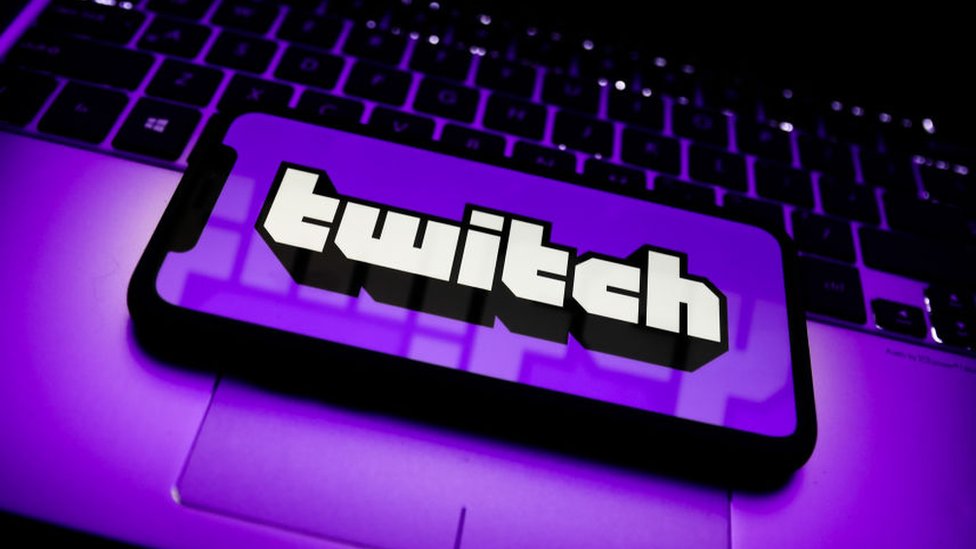
8. Crowdfundly: A Powerful Patreon Alternative for Creators
Crowdfundly is a rising star in the world of creator platforms, offering a unique set of tools to connect creators with their supporters. Designed to be a seamless and accessible alternative to Patreon, Crowdfundly allows content creators to accept tips, donations, and offer memberships while also providing a digital shop for fans to purchase art and other creative works.
Strengths:
Direct Payments: Unlike many crowdfunding platforms, Crowdfundly facilitates direct payments, ensuring that creators receive funds immediately without any delays.
Community Building: By focusing on building strong creator communities, Crowdfundly offers a space for creators to share their work and engage with fans, making it easier to maintain lasting relationships.
Customizable Options: The platform allows creators to personalize their profiles and shops, providing a unique space to showcase their best work and talents.
Affordable: Crowdfundly offers lower commission rates compared to other platforms, making it an attractive option for creators looking to maximize their earnings.
Weaknesses:
Newer Platform: As a relatively new player in the market, Crowdfundly may not have as large a user base or brand recognition as platforms like Patreon.
Limited Advanced Features: While Crowdfundly offers a simple platform, it lacks some of the more advanced features available on larger crowdfunding platforms.
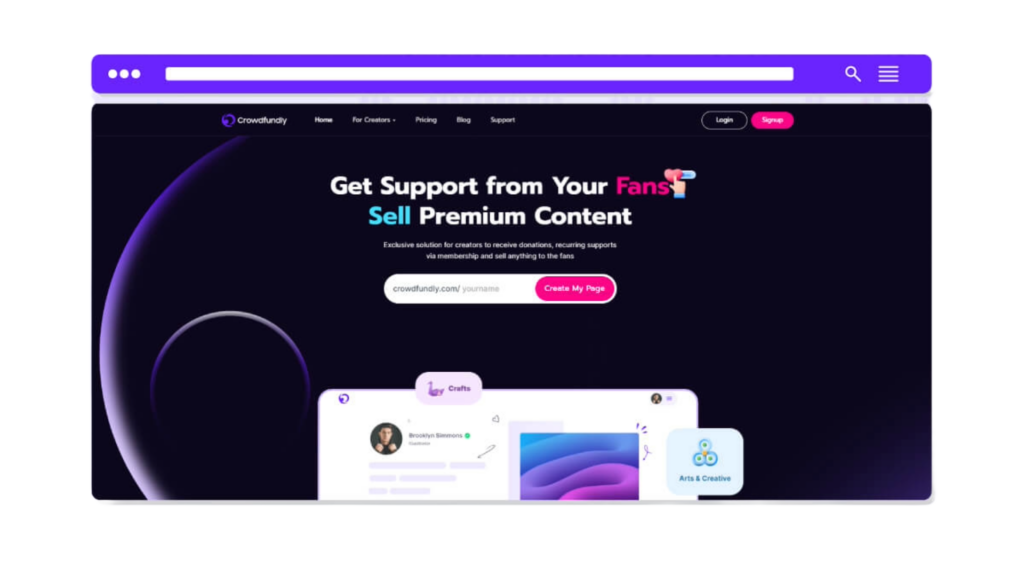
9. Podia: A Versatile Platform for Course Creators and Coaches
Podia stands out for its all-in-one functionality, offering creators the ability to sell courses, memberships, and digital downloads with ease. Perfect for coaches and educators, Podia allows creators to fully customize their branding with the option to build a personalized website, making it a top choice for those looking to establish a strong online presence.
Strengths:
Comprehensive Tools: Podia provides a robust set of tools for creators, including the ability to sell online courses, digital products, and manage memberships all in one place.
Customization and Branding: With its highly customizable website options, Podia allows creators to tailor their pages to reflect their unique brand and style.
No Transaction Fees on Donations: Podia’s free plan does not charge transaction fees on donations, making it an attractive option for creators who want to keep costs low.
Built-In Marketing Features: Podia comes with built-in marketing tools to help creators boost their sales, from email marketing to customizable discount codes.
Weaknesses:
Higher Fees on Free Plan: While Podia’s free plan is accessible, it comes with an 8% transaction fee, which can add up for creators who rely heavily on sales.
Pricing for Advanced Plans: The Mover and Shaker plans, while offering more advanced features, come at a cost that may not be affordable for all creators.
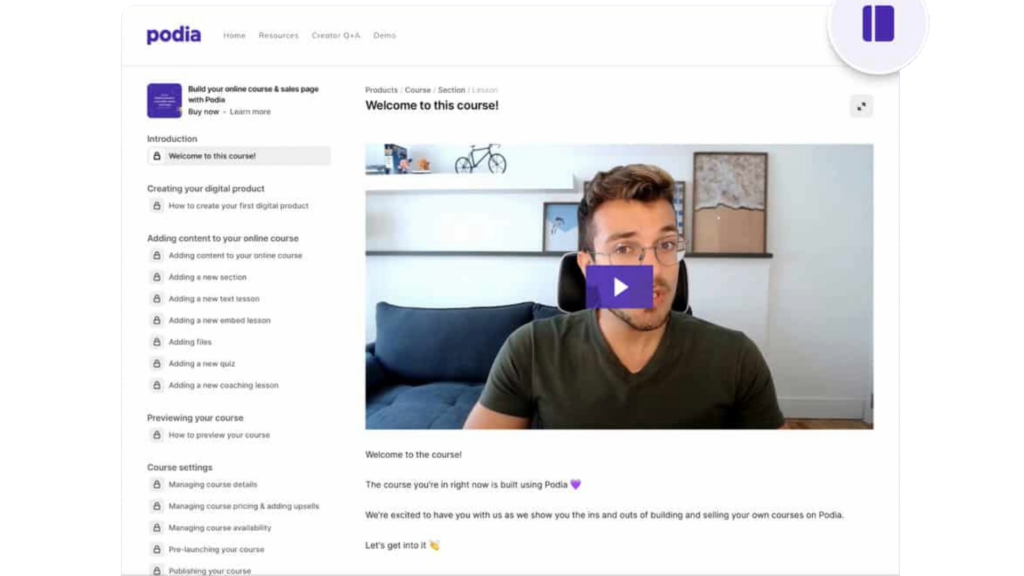
10. Sellfy: Ideal for Artists and Entrepreneurs
Sellfy is a perfect platform for digital product sellers, especially artists with an entrepreneurial mindset. With a focus on creative businesses, Sellfy allows users to sell everything from digital goods to subscriptions and even raise funds for creative projects. The platform also includes advanced e-commerce features like print-on-demand, upselling, and instant payouts.
Strengths:
E-Commerce Focused: Sellfy offers a variety of features tailored for creative entrepreneurs, including print-on-demand and “pay-what-you-want” options, making it a versatile choice for artists.
Seamless Social Media Integration: The platform integrates well with social media, allowing creators to promote their products easily across different channels.
Instant Payouts: Creators benefit from instant payouts, ensuring that they receive their earnings quickly without waiting for traditional payment cycles.
Advanced Selling Tools: With features like upselling and discount codes, Sellfy helps creators maximize their sales and reach their target audience effectively.
Weaknesses:
Limited to Digital Products: While Sellfy excels in selling digital products, it may not be the best choice for creators looking to sell physical items or more complex products.
Basic Interface: While functional, Sellfy’s user interface may not be as visually appealing or intuitive as some other platforms, which could be a downside for creators looking for a more polished experience.
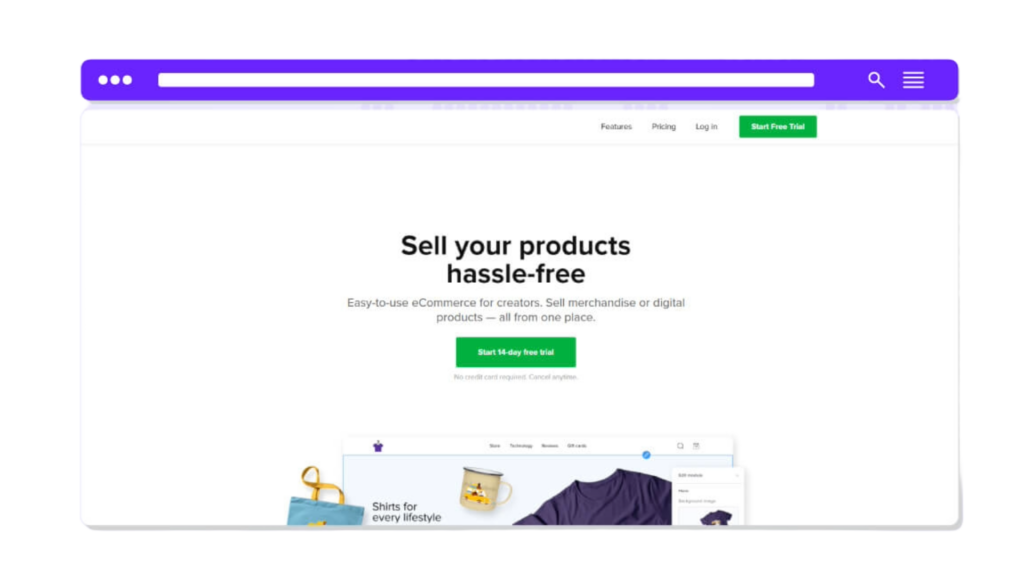
Diversification in Monetization
In today’s rapidly evolving creator economy, diversification has become a critical strategy for financial stability. Relying solely on one revenue stream, such as ad revenue or a single platform, can expose creators to significant risks. Shifting algorithms, changes in audience behavior, or new platform policies can impact earnings, making diversification a necessary tool for sustaining income.
According to Influencer Marketing Hub, the most successful creators diversify their monetization strategies, using a mix of subscription models (e.g., Patreon, OnlyFans), product sales (e.g., merchandise, digital goods), and affiliate marketing. A report by New Media Studies found that 87% of creators who utilized multiple revenue streams reported more consistent income compared to those relying on a single source. For example, YouTube creators often combine ads with merchandise sales and brand partnerships, while creators on Patreon can augment their subscription earnings with digital product sales or live-streaming tips.
By diversifying their income sources, creators can weather shifts in the digital landscape and continue to grow their businesses while minimizing financial risks.
What Creators Need to Know in 2025 and Beyond
Looking toward the future, several key trends are set to shape the creator economy in 2025 and beyond. One of the most significant trends is the rise of the metaverse, where creators will have opportunities to build virtual experiences and monetize digital goods in immersive environments. According to PwC, the metaverse market could be worth $1.5 trillion by 2030, offering creators the chance to monetize virtual real estate, NFTs, and immersive experiences. The immersive nature of virtual worlds opens up unique possibilities for creators to sell exclusive content, host virtual events, and build new communities in entirely new digital spaces.
Another emerging trend is the increasing reliance on NFTs for digital content monetization. By offering unique digital assets, creators can capitalize on their intellectual property in a decentralized marketplace. In fact, the NFT market reached $41 billion in 2021, according to NonFungible.com, and it is expected to continue growing as more creators embrace blockchain technology. With NFTs, creators can offer one-of-a-kind pieces of digital art, music, videos, and more, and retain ownership of their creations while still profiting from their sales. The ability to program royalties into NFTs ensures that creators continue to benefit from secondary sales of their work, giving them ongoing passive income.
Finally, AI and automation will continue to transform how creators engage with their audiences and manage their monetization strategies. In 2025, AI tools will likely become more integrated into content creation and audience analysis, providing creators with deeper insights into viewer preferences, engagement patterns, and revenue opportunities. Automation will also streamline the process of scheduling, marketing, and distributing content across multiple platforms, allowing creators to focus more on the creative aspects of their work. For instance, AI can help automate audience segmentation, optimize advertising campaigns, and even suggest content ideas based on trending topics, all of which help creators maximize their monetization potential without additional manual effort.
FQ&A
What are the key monetization platforms for content creators in 2025?
In 2025, the creator economy will continue to thrive, with AI and automation enabling new ways to scale and diversify income. Key monetization platforms for content creators include YouTube, Patreon, OnlyFans, Substack, and newer players like Hule and TikTok, offering various opportunities for income generation, from fan-driven subscriptions to brand partnerships.
How is AI transforming content creation and monetization?
AI tools like RunwayML and Adobe Sensei streamline content production and enhance creativity, reducing the time spent on tasks such as video editing and image enhancement. AI-driven platforms enable creators to optimize their content strategies by providing real-time insights into audience behavior and preferences, allowing for more targeted monetization.
Which platforms offer fan-driven monetization?
Monetization latforms like Patreon, OnlyFans, and Substack focus on fan-driven revenue models. These platforms allow creators to directly monetize their content through subscriptions and exclusive offerings, fostering stronger relationships with their audience and providing a more stable income stream compared to ad-based revenue.
What are the advantages of YouTube as a monetization platform?
YouTube offers a wide array of monetization options, such as ad revenue, Super Chats, and brand partnerships. Its massive audience provides creators with the potential for substantial reach, while its advanced analytics help optimize content strategy. However, creators face high competition and dependence on the platform’s algorithm for content visibility.
How does TikTok benefit content creators monetarily?
TikTok excels in offering creators viral potential through its algorithm, enabling even new creators to gain substantial exposure quickly. TikTok also offers monetization through its Creator Fund, live streaming features, and brand partnerships. However, the platform’s ad revenue is unpredictable, and creators must constantly engage their audience with frequent content.
What is Hule, and how does it support creators?
Hule is an emerging platform that integrates AI tools to assist creators with trend prediction, content optimization, and audience targeting, leading to increased earnings. Its user-friendly interface and diverse monetization features, such as ads, sponsorships, and fan donations, make it appealing for creators, although its limited brand recognition and market penetration are potential drawbacks.
Why is the creator economy growing so rapidly?
The creator economy is expanding rapidly due to AI advancements, increased brand investments, and platforms like YouTube and TikTok offering global reach. Governments, such as India’s $1 billion fund, are supporting this growth, creating more opportunities for creators to develop skills and access global markets.

The newsletter for Content Creators.
Join Hule to Monetize Your Creativity.
Elevate your content on the best social platform for content creators. Live your passion, grow your audience, and start monetizing today!
